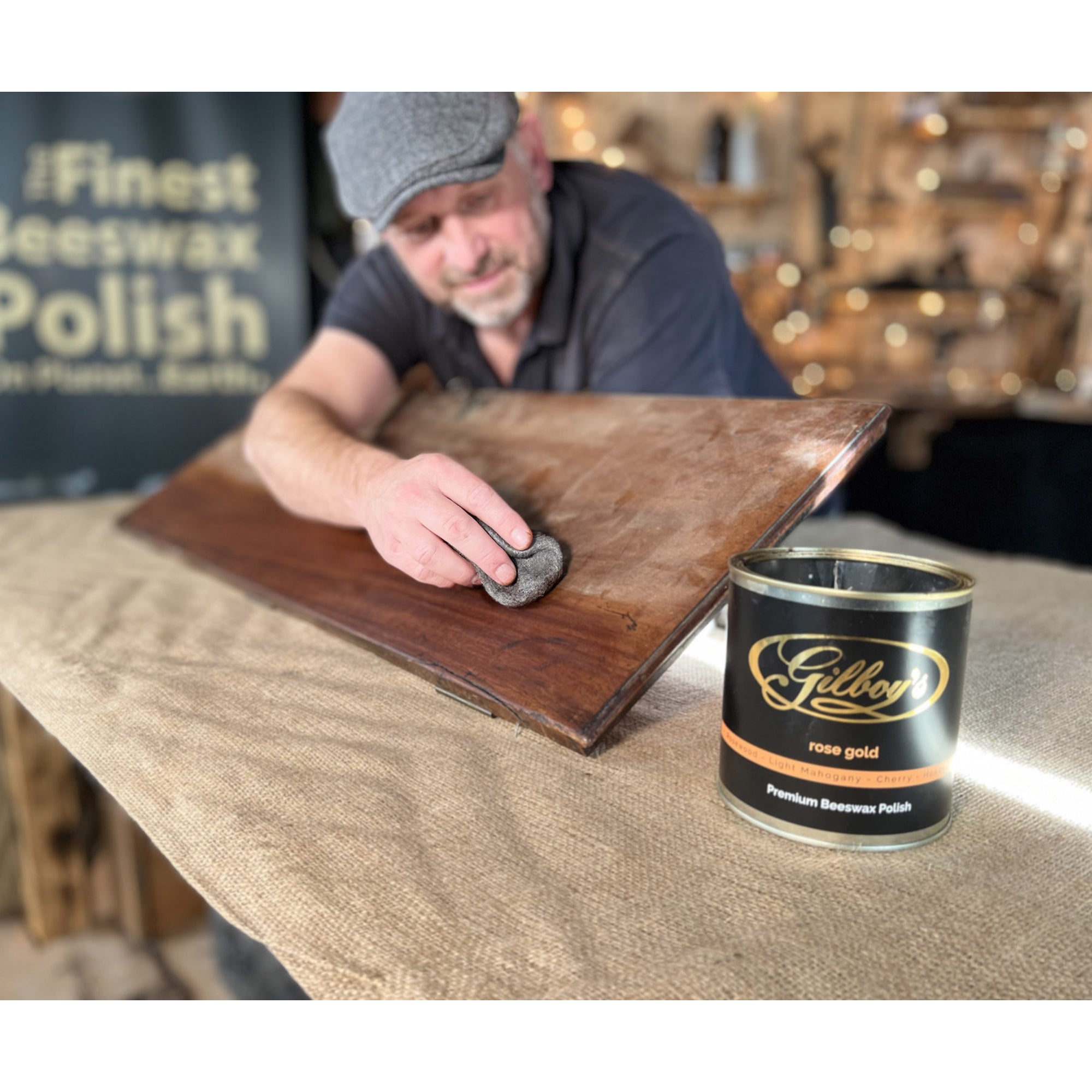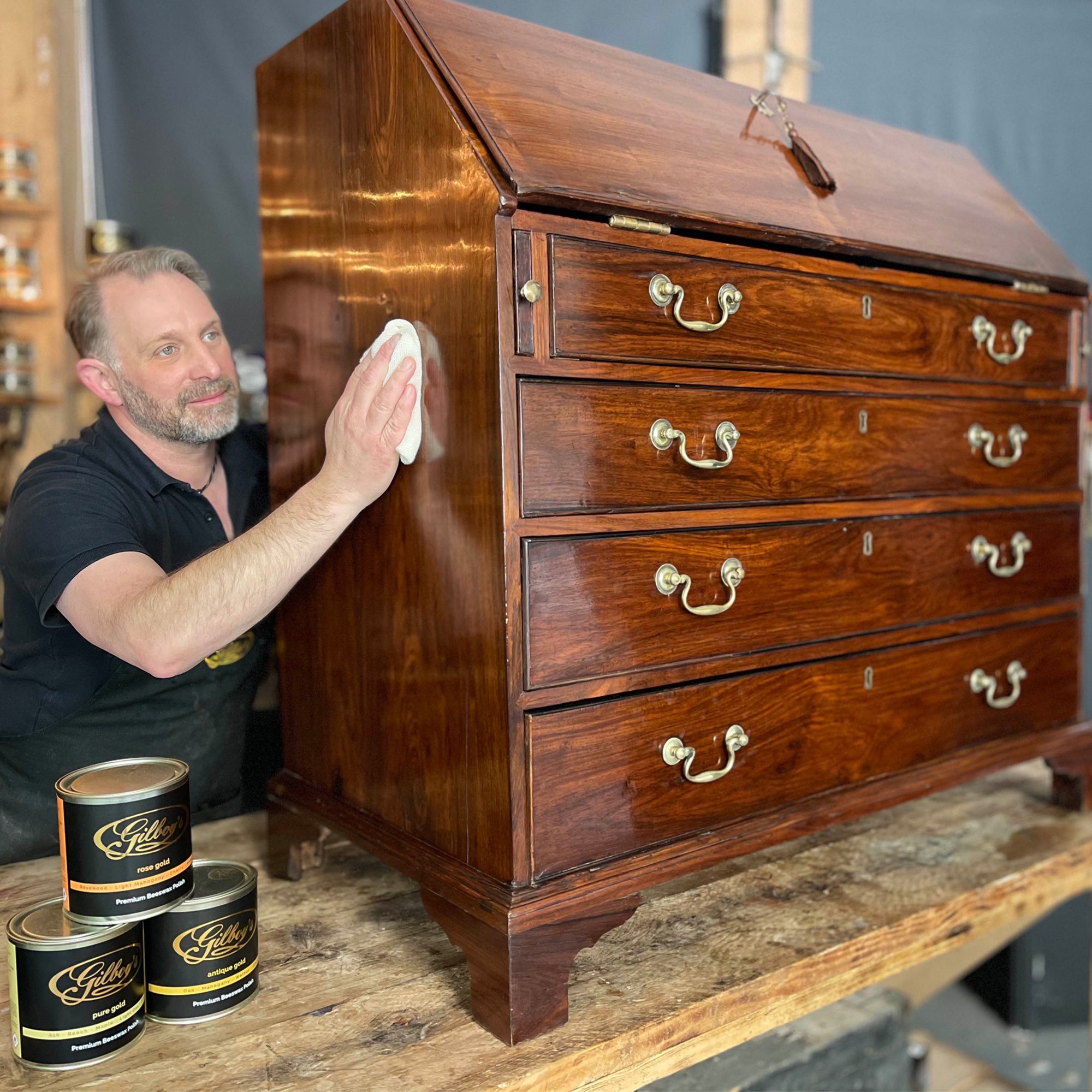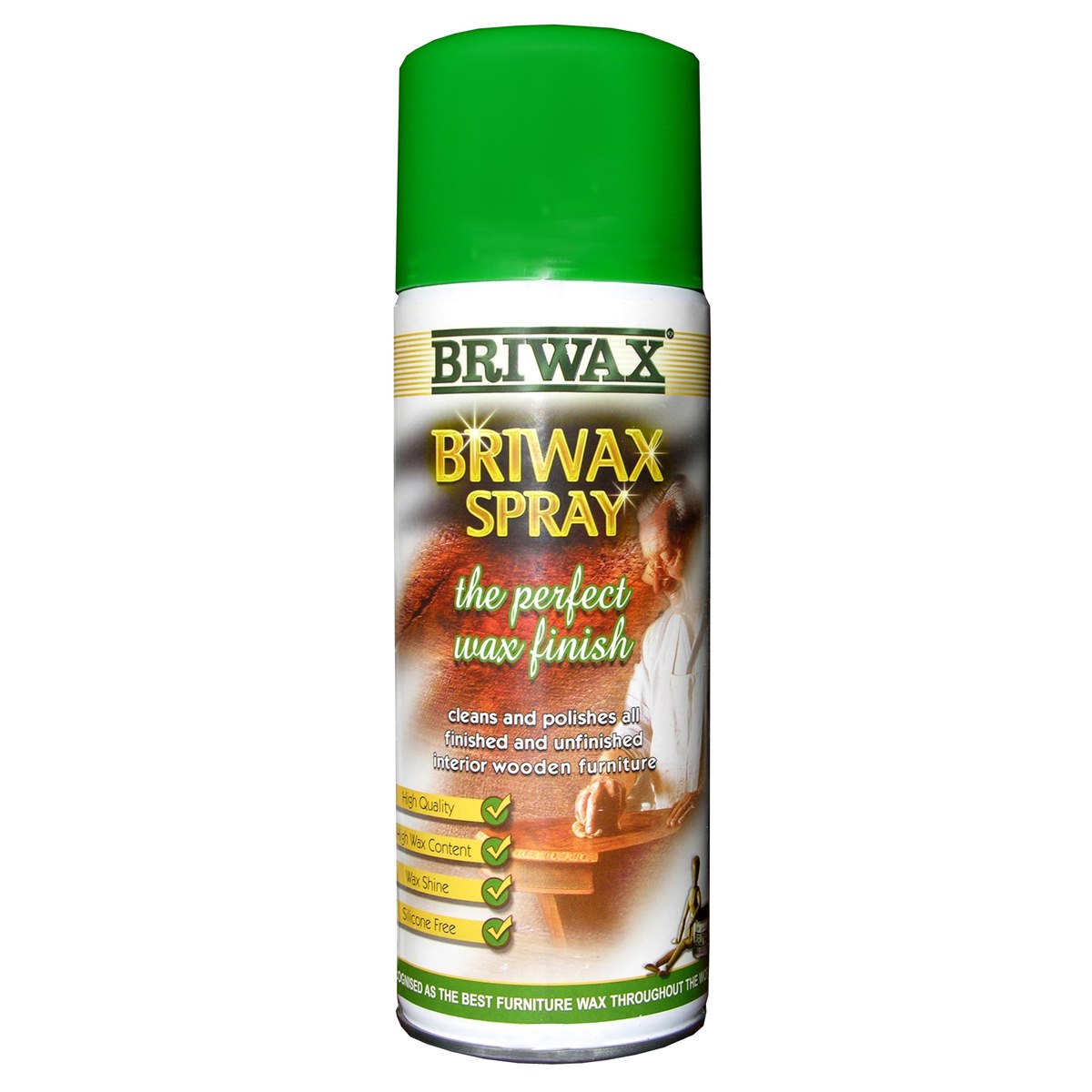Have you ever wondered how to keep your furniture looking as pristine as the day you first brought it home? If you’re nodding your head, you’re definitely not alone. Many people in the UK struggle to find the best furniture polish that can handle everything from minor nicks to deep scratches, while also maintaining that perfect gleam.

This image is property of gilboys.co.uk.
Importance of Using Furniture Polish
Using furniture polish is more than just about achieving a shiny finish. It plays a significant role in preserving the integrity and lifespan of your furniture. Polishes can protect your furniture from water rings, heat marks, and everyday wear and tear.
Protective Barrier
Furniture polish adds a protective layer that shields the wood from damage caused by moisture, heat, and dirt. This layer can help prevent scratches and stains, effectively prolonging the life of your pieces.
Enhances Appearance
Who doesn’t love a shiny, well-polished piece of furniture? A quality polish can enhance the natural beauty of the wood, bringing out its grains and colors, making your room look aesthetically pleasing.
Easy Maintenance
Regular application of furniture polish makes cleaning and maintaining your furniture much easier. Dust and dirt don’t stick as easily to a well-polished surface, saving you time and effort on cleaning tasks.
What to Look for in a Furniture Polish
Before you buy any furniture polish, it's good to know what to look for to get the best results. Here's a quick guide to help you make an informed decision.
Ingredients
Pay attention to the ingredients. Natural beeswax and carnauba wax are often preferred because they’re safe and effective. Avoid polishes with a high amount of silicon, as they can leave a residue.
Type of Finish
Consider the type of finish you want to achieve. Some polishes offer a high-gloss finish, while others provide a more subdued sheen. Choose one that matches your preferences and the style of your room.
Ease of Use
You wouldn’t want a product that’s difficult to apply, right? Look for polishes that come with clear instructions and don’t require a lot of elbow grease. Aerosol sprays, wipes, and liquid polishes each have their pros and cons.
Scent
While not the most crucial factor, the scent can impact your overall experience. Some furniture polishes come with fragrances that can add a fresh aroma to your space, while others are odorless.
Types of Furniture Polish
Various types of furniture polishes are available. Each has its own set of pros and cons, and can be best suited for different types of wood and purposes.
| Type | Example Products | Pros | Cons |
|---|---|---|---|
| Wax-Based Polishes | Beeswax Furniture Polish | Provides a deep, lasting shine. | Requires more effort to apply. |
| Oil-Based Polishes | Pledge Lemon Clean | Nourishes and revitalizes wood. | Can leave an oily residue. |
| Aerosol Sprays | Mr. Sheen Multi-Surface | Easy to apply and quick-drying. | Sometimes contains more silicon. |
| Liquid Polishes | Murphy Oil Soap | Cleans and polishes simultaneously. | May require more frequent applications. |
Wax-Based Polishes
Wax-based polishes are perfect for those who want to provide their furniture with a deep, lasting shine. They usually contain natural waxes like beeswax and carnauba wax. Be prepared to put in a little extra effort when applying these, but the results are worth it.
Oil-Based Polishes
If your furniture has seen better days, oil-based polishes can work wonders in revitalizing and nourishing the wood. Some popular options include lemon oil or orange oil, leaving a pleasant scent behind.
Aerosol Sprays
Aerosol sprays are incredibly convenient and easy to use. They’re great for quick touch-ups but sometimes contain a higher amount of silicon. Over time, this can leave a residue that’s hard to remove.
Liquid Polishes
Liquid polishes can be a great all-in-one solution to clean and polish your furniture. These often contain soaps and oils to remove dirt while adding a layer of shine. However, you might need to apply them more frequently than other types.
Top Furniture Polishes Available in the UK
To help you narrow down your choices, let’s take a closer look at some of the best furniture polishes available in the UK.
Colron Refined Beeswax Polish
Pros:
- Natural ingredients
- Deep nourishing shine
- Long-lasting effect
Cons:
- Requires more effort to apply
- Pricier than other options
Pledge Revive It Restoring Oil
Pros:
- Easy to use
- Pleasant lemon fragrance
- Nourishes wood
Cons:
- Can leave an oily residue
- Frequent application needed
Mr. Sheen Multi-Surface Polish
Pros:
- Convenient aerosol spray
- Quick-drying formula
- Affordable
Cons:
- Contains silicon
- Less durable finish
Murphy Oil Soap Liquid Cleaner and Polish
Pros:
- Multi-purpose (cleans and polishes)
- Safe for various wood types
- Economical
Cons:
- Requires frequent application
- Can leave a sticky residue
Mylands Beeswax Leather Polishes
Pros:
- Natural beeswax formulation
- Excellent for antique furniture
- Rich, lasting shine
Cons:
- Higher price point
- Labor-intensive application

This image is property of gilboys.co.uk.
How to Apply Furniture Polish for Best Results
Applying furniture polish correctly can make a big difference in the final outcome. Follow these steps to get the best results:
Step 1: Clean the Surface
Before you apply any polish, ensure the furniture surface is clean. Use a soft cloth or duster to remove any loose dirt or debris. If needed, use a mild wood cleaner to tackle tougher spots.
Step 2: Test a Small Area
Always test the polish on a small, inconspicuous area first to see how it reacts with your wood. This can prevent potential damage or discoloration.
Step 3: Apply the Polish
Using a soft cloth, apply the polish in a thin, even layer. Follow the grain of the wood to help the polish soak in better. For aerosol sprays, hold the can at an appropriate distance and spray lightly.
Step 4: Buff the Surface
Once the polish has been applied, use a clean, dry cloth to buff the surface. This step helps to remove any excess polish and enhances the shine.
Step 5: Let it Set
Allow the polish to set for a few hours before placing any objects back on the furniture. This will give the protective layer time to fully bond with the wood.
Common Mistakes to Avoid
To get the most out of your furniture polish, it's important to avoid common pitfalls that many people fall into.
Over-Applying
More polish doesn’t necessarily mean better results. Over-applying can leave a sticky residue and attract more dust and dirt.
Skipping Testing
Never skip the testing step. This can prevent potential damage or discoloration, especially if you’re using a new product for the first time.
Using the Wrong Cloth
The type of cloth you use can make a big difference. Opt for a soft, lint-free cloth to avoid scratching the wood surface or leaving behind fibers.
Ignoring Manufacturer Instructions
Always read and follow the manufacturer’s instructions. They know their product best and will provide guidelines for optimal use.

This image is property of www.homecareessentials.co.uk.
DIY Furniture Polish Options
For those who prefer a more natural or budget-friendly approach, DIY furniture polish can be a fantastic option. Here's how you can make your own furniture polish at home with simple ingredients.
Olive oil and Lemon Juice
Ingredients:
- 1 cup olive oil
- 1/2 cup lemon juice
Mix the olive oil and lemon juice in a bowl. Use a soft cloth to apply the mixture to your furniture. This combination cleans, nourishes, and adds a nice shine.
Vinegar and Olive Oil
Ingredients:
- 1 cup vinegar
- 1 cup olive oil
Mix equal parts vinegar and olive oil. This mixture is great for tough residues and enhancing the wood’s natural grain.
Beeswax and Coconut Oil
Ingredients:
- 1/4 cup beeswax
- 1/2 cup coconut oil
Melt the beeswax and then mix it with the coconut oil. This homemade polish offers a deep, lasting shine similar to commercial beeswax polishes.
When Not to Use Furniture Polish
Furniture polish is versatile, but there are times when you should avoid using it. Knowing when polishing is not appropriate can save you from potential mishaps.
New or Recently Polished Furniture
If your furniture is newly purchased or recently polished, it’s best to wait a while before applying another layer. Over-polishing can lead to a build-up that dulls the shine.
Unsealed Wood
Unsealed or unfinished wood can absorb too much polish, resulting in a greasy surface. Stick to light, natural oils for these types of wood.
Painted or Antiqued Finishes
Polishes can sometimes remove or alter painted finishes. Always test in an inconspicuous area first, or stick to products specifically designed for painted surfaces.
Metal or Glass Surfaces
Using furniture polish on metal or glass is generally not advisable. Stick to products specifically designed for those surfaces to avoid smudging or damaging them.

This image is property of gilboys.co.uk.
Conclusion
Finding the best furniture polish in the UK can be a game-changer in maintaining the beauty and longevity of your furniture. By considering factors like ingredients, type of finish, and ease of use, you can make a well-informed choice that suits your needs. Whether you prefer a store-bought option like Colron Refined Beeswax Polish or a DIY solution involving olive oil and lemon juice, the key is regular maintenance and proper application. Follow these guidelines, and your furniture will continue to look stunning for years to come.
















